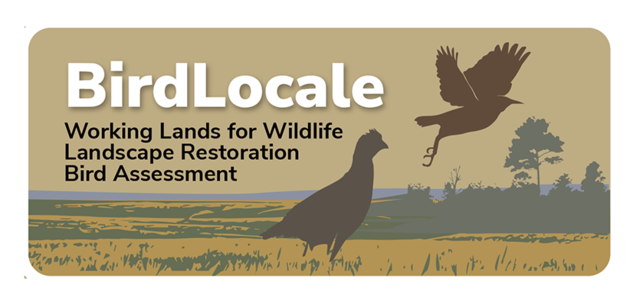-
 Single Grid Cell Endemics
Single Grid Cell Endemics
-
Many aquatic and terrestrial species are geographically rare, often found in a single cave. This map dis[;ays the geographic distribution of endemics scattered throughout the Appalachian LCC region.
Located in
Research
/
…
/
Gallery: Cave and Karst Maps
/
Study Overview Maps and Foundational Datasets
-
 Sinkhole Density
Sinkhole Density
-
Density of sinkholes per square kilometer throughout the Appalachian LCC region.
Located in
Research
/
…
/
Gallery: Cave and Karst Maps
/
Study Overview Maps and Foundational Datasets
-
 Soil Available Water Capacity
Soil Available Water Capacity
-
High values for soil available water capacity at 1 kilometer resolution throughout the Appalachian LCC region.
Located in
Research
/
…
/
Gallery: Cave and Karst Maps
/
Study Overview Maps and Foundational Datasets
-
 Soil Organic Matter and Sinkholes
Soil Organic Matter and Sinkholes
-
Sinkhole density (number per square kilometer) and soil organic matter (percent by weight) throughout the Appalachian LCC region.
Located in
Research
/
…
/
Gallery: Cave and Karst Maps
/
Study Overview Maps and Foundational Datasets
-
 Soil Permeability
Soil Permeability
-
High values for soil permeability at 1 kilometer resolution throughout the Appalachian LCC region.
Located in
Research
/
…
/
Gallery: Cave and Karst Maps
/
Study Overview Maps and Foundational Datasets
-
 Soil Thickness
Soil Thickness
-
High end of range of soil thickness at 1 kilometer resolution throughout the Appalachian LCC region.
Located in
Research
/
…
/
Gallery: Cave and Karst Maps
/
Study Overview Maps and Foundational Datasets
-
 Species and Habitat Vulnerability Assessments of Appalachian Species and Habitats
Species and Habitat Vulnerability Assessments of Appalachian Species and Habitats
-
Future climate change adaptation and mitigation strategies will be dependent on the best available projections of how the regional climate will change and the impacts those changes will have on the region’s natural and cultural resources. Understanding the vulnerability of various species and habitats to climate change within the Appalachian LCC is of critical importance for making effective conservation decisions. The AppLCC funded a Climate Change Vulnerability Assessment research project that addresses several factors: 1) how the Cooperative should acquire information about the climate vulnerability of Appalachian species and habitats to develop vulnerability assessments for a suite of key species and habitats to share with partners; 2) compilation of known vulnerability assessments of species and habitats, and 3) new climate change vulnerability assessments of selected species and habitats in the AppLCC region.
Located in
Research
-
 Spider Species Distribution by 1 km Grid
Spider Species Distribution by 1 km Grid
-
Distribution of spider species by 1 kilometer grid throughout the Appalachian LCC region.
Located in
Research
/
…
/
Gallery: Cave and Karst Maps
/
Modeling Input Maps
-
 Springtail Species Distribution by 1 km Grid
Springtail Species Distribution by 1 km Grid
-
Distribution of springtail species by 1 kilometer grid throughout the Appalachian LCC region.
Located in
Research
/
…
/
Gallery: Cave and Karst Maps
/
Modeling Input Maps
-
 Stream Baseflow Index
Stream Baseflow Index
-
Average annual stream baseflow index at 1 kilometer resolution throughout the Appalachian LCC region.
Located in
Research
/
…
/
Gallery: Cave and Karst Maps
/
Study Overview Maps and Foundational Datasets























